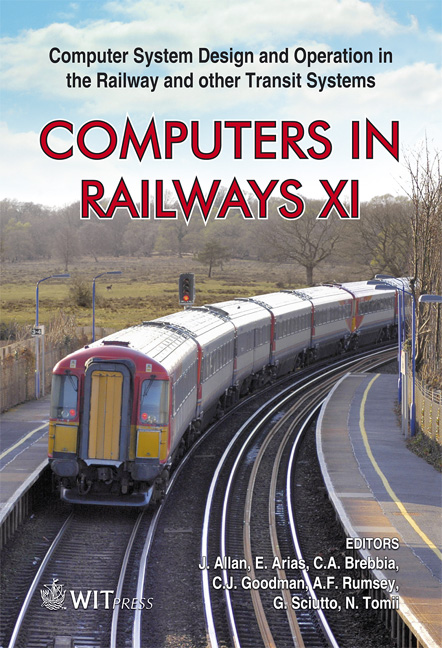Enhanced ETCS_L3 Train Control System
Price
Free (open access)
Transaction
Volume
103
Pages
10
Page Range
223 - 232
Published
2008
Size
576 kb
Paper DOI
10.2495/CR080231
Copyright
WIT Press
Author(s)
D. Emery
Abstract
The last decade has seen the development of the European Train Control System ERTMS/ETCS. This Automatic Train Protection system (ATP) was designed in three versions: ETCS_Level 1, 2 and 3. ETCS_Level_3 uses moving blocks and provides short headways. However, ETCS_Level 2 may also offer short headways provided suitable block sections’ length. The proposed train control system is an enhancement of ETCS-Level 3. It could also be considered as an enhancement of ETCS_Level 2. Its main advantage compared to other ATP systems is to provide even shorter headways, offering potential for capacity increases, especially for busy High Speed Lines (HSL). Keywords: braking curves, capacity, ETCS, ERTMS, high speed line, interlocking, moving block. 1 Interoperability, safety and capacity with ETCS 1.1 ETCS for interoperability and safety The European Train Control System was firstly developed to offer to the European Rail community a common Automatic Train Protection system in replacement of the existing ones. In theory, this is needed urgently as more than 15 different and incompatible ATP systems equip the European main rail networks (cf. table 1) [1], which obviously preclude interoperability. The Eurobalise is a local transponder providing trains with a lot of information on the downstream route attributes and speed limits. It could replace any kind of balises or contacts used today by ATP-systems on conventional lines. It makes it possible to implement a continuous speed control, in particular
Keywords
braking curves, capacity, ETCS, ERTMS, high speed line, interlocking, moving block.





